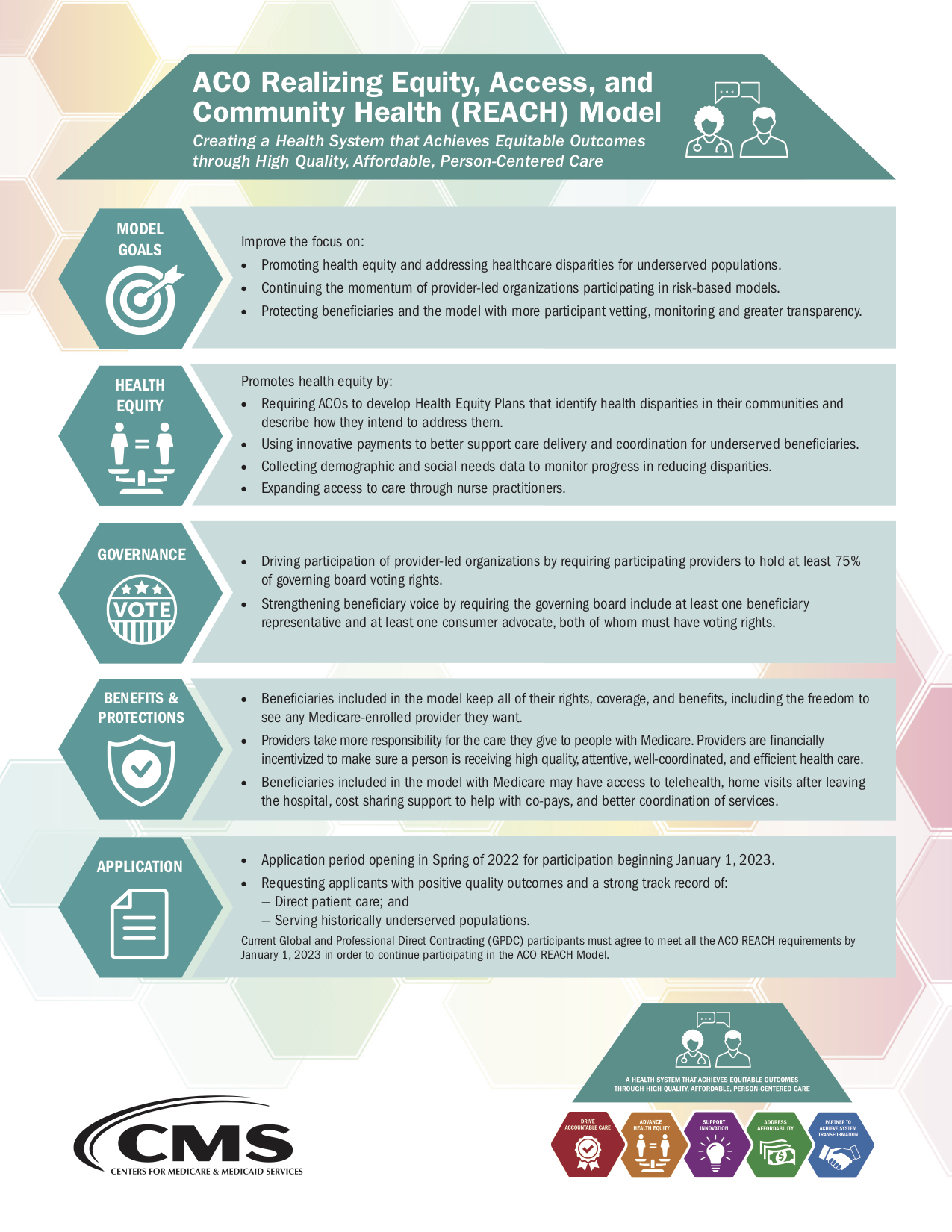Learn More
ACO REACH
ACO REACH (Accountable Care Organization Realizing Equity, Access, and Community Health) is a Medicare model designed to enhance healthcare equity, provider accountability, and financial sustainability. It focuses on improving care for underserved communities while promoting value-based care through risk-sharing arrangements.

Key Features of ACO REACH
Advancing Health Equity
- ACOs must develop health equity plans to address disparities.
- Strategies include improving access to care and targeted interventions for vulnerable populations.
Provider Leadership & Governance
- 75% of the governing body must be controlled by participating providers.
- Requires at least two beneficiary advocates (one Medicare beneficiary and one consumer advocate) with voting rights.
Beneficiary Protection Measures
- Stricter oversight of ownership, leadership, and governance structures.
- Enhanced transparency and patient engagement initiatives.
Three types of Participants:
Standard ACOs
Standard ACOs are organizations that have experience serving Original Medicare patients. They have previously participated in another shared savings model and/or the Shared Savings Program. If you’re a new organization, you must be composed of existing Original Medicare providers and suppliers. This is to ensure that any participating clinicians will have substantial experience serving Original Medicare Beneficiaries.
New Entrant ACOs
New Entrant ACOs are comprised of organizations that have not traditionally provided services to an Original Medicare population. They can also be organizations who may rely primarily on voluntary alignment in the first few performance years of model participation. Claims-based alignment is applied here.
High Needs Population ACOs
High Needs Population ACOs are ACOs that serve Original Medicare patients with complex needs, including dually eligible beneficiaries, who are aligned to an ACO through voluntary alignment or claims-based alignment.
-
- These participants are expected to use a model of care designed to serve individuals with complex needs, such as the one employed by the Programs of All-Inclusive Care for the Elderly (PACE), to coordinate care for their aligned beneficiaries
Participant Options:
Professional – Lower risk-sharing
50% savings/losses—with one payment option for participants: Primary Care Capitation Payment, a risk-adjusted monthly payment for primary care services provided by the ACO’s participating providers.
Global – Higher risk-sharing
100% savings/losses—with two payment options: Primary Care Capitation Payment (described above) or Total Care Capitation Payment, a risk-adjusted monthly payment for all covered services, including specialty care, provided by the ACO’s participating providers.
Performance Year 2025 Updates & Financial Adjustments
Benchmark & Financial Methodology Changes
- Benchmark Blend: Maintains 55% historical expenditures / 45% regional expenditures.
- Regional Adjustment Cap: Reduced from 5% to 3% for Standard ACOs.
- Global Risk Benchmark Discount: Increased from 3.5% in 2025 to 4% in 2026.
- Risk Adjustment Model: Uses 2024 (V28) risk adjustment model, blended with 2020 (V24).
- Stop-Loss Reinsurance: New budget-neutral adjustments at final reconciliation.

